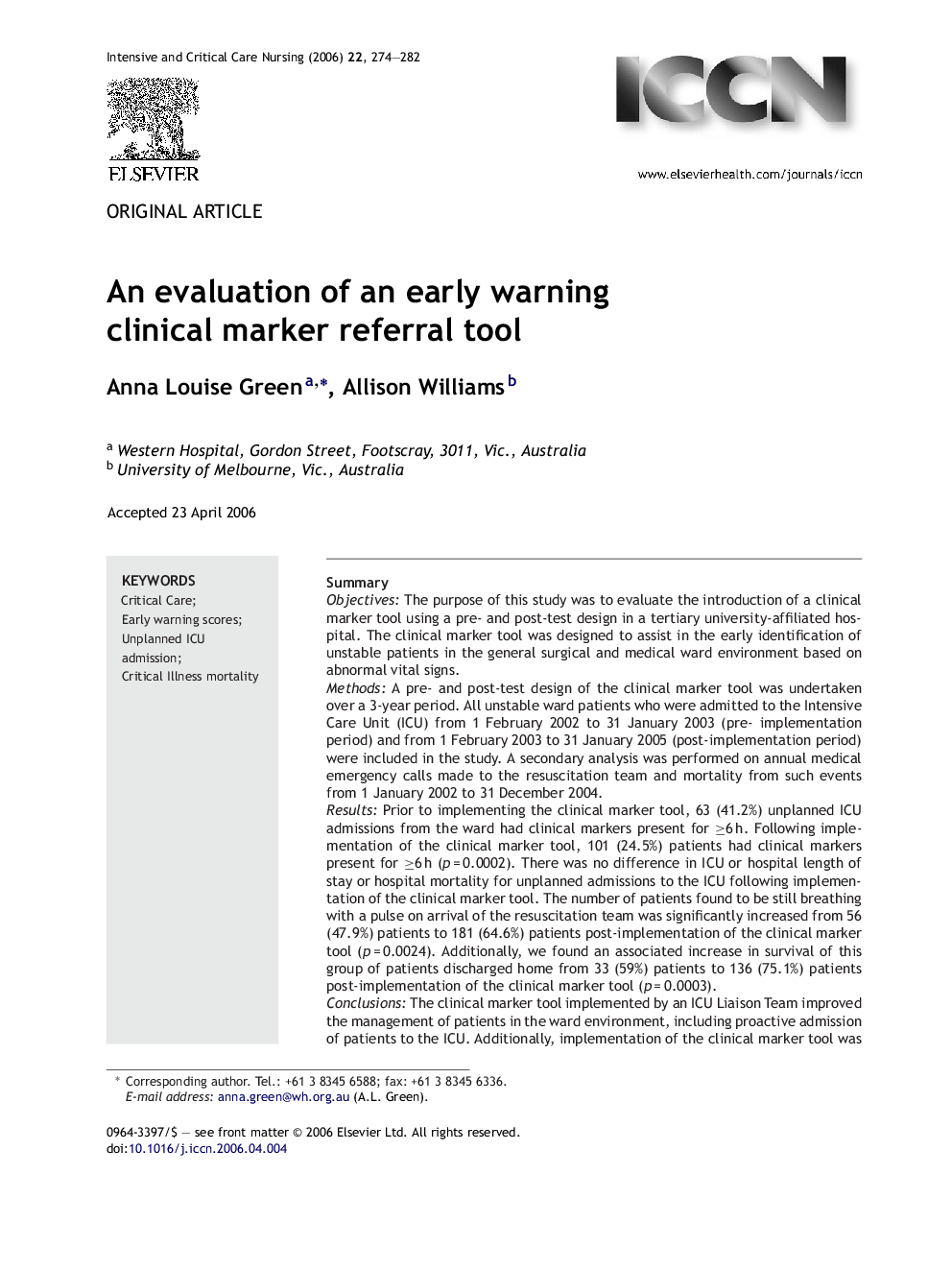| کد مقاله | کد نشریه | سال انتشار | مقاله انگلیسی | نسخه تمام متن |
|---|---|---|---|---|
| 2653872 | 1139792 | 2006 | 9 صفحه PDF | دانلود رایگان |

SummaryObjectivesThe purpose of this study was to evaluate the introduction of a clinical marker tool using a pre- and post-test design in a tertiary university-affiliated hospital. The clinical marker tool was designed to assist in the early identification of unstable patients in the general surgical and medical ward environment based on abnormal vital signs.MethodsA pre- and post-test design of the clinical marker tool was undertaken over a 3-year period. All unstable ward patients who were admitted to the Intensive Care Unit (ICU) from 1 February 2002 to 31 January 2003 (pre- implementation period) and from 1 February 2003 to 31 January 2005 (post-implementation period) were included in the study. A secondary analysis was performed on annual medical emergency calls made to the resuscitation team and mortality from such events from 1 January 2002 to 31 December 2004.ResultsPrior to implementing the clinical marker tool, 63 (41.2%) unplanned ICU admissions from the ward had clinical markers present for ≥6 h. Following implementation of the clinical marker tool, 101 (24.5%) patients had clinical markers present for ≥6 h (p = 0.0002). There was no difference in ICU or hospital length of stay or hospital mortality for unplanned admissions to the ICU following implementation of the clinical marker tool. The number of patients found to be still breathing with a pulse on arrival of the resuscitation team was significantly increased from 56 (47.9%) patients to 181 (64.6%) patients post-implementation of the clinical marker tool (p = 0.0024). Additionally, we found an associated increase in survival of this group of patients discharged home from 33 (59%) patients to 136 (75.1%) patients post-implementation of the clinical marker tool (p = 0.0003).ConclusionsThe clinical marker tool implemented by an ICU Liaison Team improved the management of patients in the ward environment, including proactive admission of patients to the ICU. Additionally, implementation of the clinical marker tool was associated with a reduction in the number of cardiac arrests and improvement in hospital mortality for patients experiencing a medical emergency call. The timeframe of instability on the ward prior to the ICU admission may be used as a quality indicator to measure ICU Liaison Team performance. Further research is required to substantiate these findings.
Journal: Intensive and Critical Care Nursing - Volume 22, Issue 5, October 2006, Pages 274–282